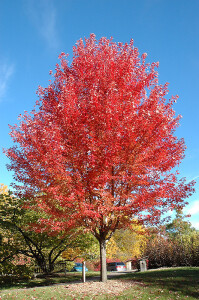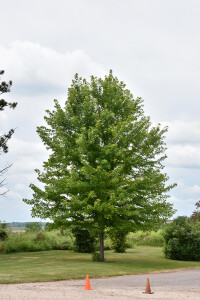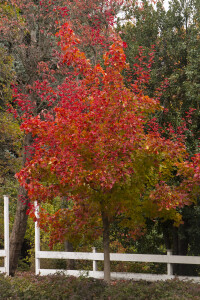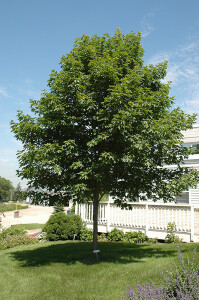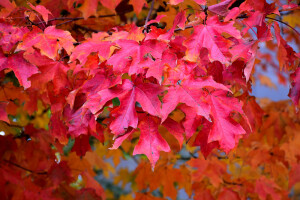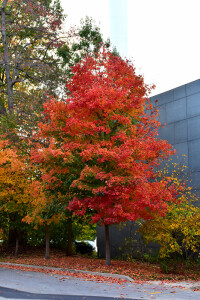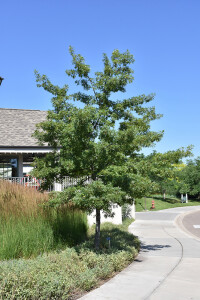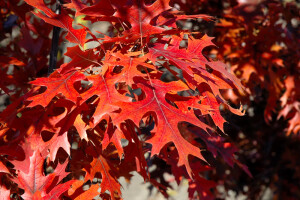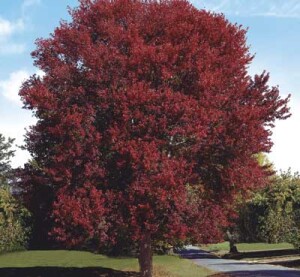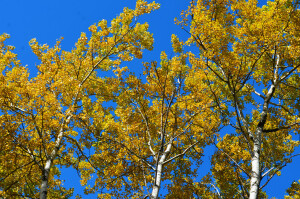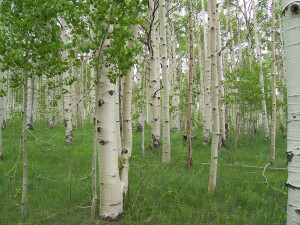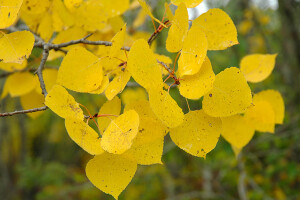“Season of mists and mellow fruitfulness,
Close bosom-friend of the maturing sun;
Conspiring with him how to load and bless
With fruit the vines that round the thatch-eves run;
To bend with apples the moss’d cottage-trees,
And fill all fruit with ripeness to the core;
To swell the gourd, and plump the hazel shells
With a sweet kernel; to set budding more,
And still more, later flowers for the bees,
Until they think warm days will never cease,
For Summer has o’er-brimm’d their clammy cells…
Where are the songs of Spring? Ay, where are they?
Think not of them, thou hast thy music too,—
While barred clouds bloom the soft-dying day,
And touch the stubble-plains with rosy hue;
Then in a wailful choir the small gnats mourn
Among the river sallows, borne aloft
Or sinking as the light wind lives or dies;
And full-grown lambs loud bleat from hilly bourn;
Hedge-crickets sing; and now with treble soft
The red-breast whistles from a garden-croft;
And gathering swallows twitter in the skies.”
John Keats’ 1820 poem ‘To Autumn” is a romantic look back at the reverence for a hauntingly beautiful season that guides us slowly into winter. This quieting down of things; the shifting colors and brisk temperatures, the crisp fall wind seems to have fully captivated us and permeated our economy. Fall home décor, Halloween decorations, trips to the apple orchard and Pumpkin Spice Everything tell a tale of a society enamored with this hushed season.
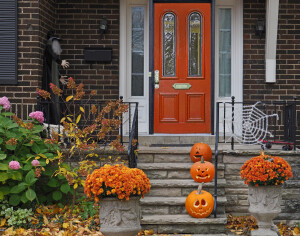
Whatever the reason for our love of gold and burgundy, orange and crimson, we can rely on nature to continue to provide it for us. Nature pushes the landscape from an enveloping green to a riotous vision of colors. The trees making up that landscape provide us with the backdrop for a season of observable enjoyment, especially for those of us who live around this beautiful bluff country!
But those colors don’t just need to be enjoyed from afar, we can also cultivate this splendor in our own backyards.
And that brings us to our list!
1) Autumn Blaze Maple
A hybrid of silver and red maples, this accent or shade tree provides stunning fall colors, is tolerant of different growing conditions and is a fast growing tree so you can enjoy the splendor sooner! Autumn Blaze Maple features showy clusters of red flowers along the branches in early spring before the leaves come out and has green foliage throughout the season. The lobed leaves turn outstanding shades of orange and in the fall and the furrowed gray bark and brick red branches add an interesting dimension to the landscape.
It will typically grow around 50’ tall with a spread of 40”. It has a high canopy of foliage that sits well above the ground and should not be planted underneath power lines.
This is a relatively low maintenance tree, and should only be pruned in summer after the leaves have fully developed, as it may ‘bleed’ sap if pruned in late winter or early spring. It has no significant negative characteristics.
As it matures, the lower branches of this tree can be strategically removed to create a high enough canopy to support unobstructed human traffic underneath. It grows at a fast rate, and under ideal conditions can be expected to live for 80 years or more.
This tree should only be grown in full sunlight. It is quite adaptable, preferring to grow in average to wet conditions, and will even tolerate some standing water. It is not particular as to soil type or pH. It is highly tolerant of urban pollution and will even thrive in inner city environments. This particular variety is an interspecific hybrid.
2) Fall Fiesta Sugar Maple
Second on our list is the Fall Fiesta Sugar Maple! This is a very hardy selection and first-class reliable shade tree featuring a fiery blend of fall colors ranging from yellow to orange and red. The Fall Fiesta is a large tree, that usually grows to about 60′ high and wide, so it needs plenty of space! It grows at a medium rate and can be expected to live to 100 years of more, so it can be enjoyed by generations.
This is a relatively low maintenance tree, and should only be pruned in summer after the leaves have fully developed.
This tree should only be grown in full sunlight. It prefers to grow in average to moist conditions, and shouldn’t be allowed to dry out. It is not particular as to soil pH, but grows best in rich soils. It is somewhat tolerant of urban pollution.
3) Majestic Skies Pin Oak
The deep, dark green foliage of the Majestic Skies Pin Oak turns to an outstanding glossy, red leaf in the Fall. This Pin Oak grows at a medium rate to about 60′ tall with a 45′ spread and can live to more than 100 years, ensuring generations of wonderful shade and enjoyment. Acorns can be a bit messy, so if you’re a fussy landscaper this tree may not be for you. The furrowed gray bark and silver branches add an interesting dimension to the landscape.
This tree will require occasional maintenance and upkeep, and is best pruned in late winter once the threat of extreme cold has passed.
It does best in full sun to partial shade. It prefers to grow in average to moist conditions, and shouldn’t be allowed to dry out. It is not particular as to soil type, but has a definite preference for acidic soils, and is subject to chlorosis (yellowing) of the leaves in alkaline soils. It is somewhat tolerant of urban pollution.
4) Burgundy Belle
The Burgundy Belle is a wonderful, compact shade tree valued for its rich reddish to wine-burgundy fall colors and grows at a medium rate. It typically reaches 50′ tall at maturity with a spread of 40′ and will live for 80 years or more!
This is a relatively low maintenance tree, and should only be pruned in summer after the leaves have fully developed, as it may ‘bleed’ sap if pruned in late winter or early spring.
This tree should only be grown in full sunlight. It is quite adaptable, preferring to grow in average to wet conditions, and will even tolerate some standing water. It is not particular as to soil type, but has a definite preference for acidic soils, and is subject to chlorosis (yellowing) of the leaves in alkaline soils. It is somewhat tolerant of urban pollution.
5) Quaking Aspen
A delicate native of the North American forest with showy white bark that adds an interesting dimension to each season. The Aspen has green foliage during the summer and leaves that dance and flutter in the faintest breeze. The round leaves turn an outstanding gold in the Fall. It suckers vigorously and works best in a natural forest or suburban woodland. Neither the flowers nor the fruit are ornamentally significant, however, the fruit can be messy in the landscape and may require occasional clean-up.
This is a high maintenance tree that will require regular care and upkeep, and is best pruned in late winter once the threat of extreme cold has passed
Quaking Aspen will grow to be about 50 feet tall at maturity, with a spread of 30 feet. It has a low canopy with a typical clearance of 5 feet from the ground. It grows at a fast rate, and under ideal conditions can be expected to live for 50 years or more.
This tree should only be grown in full sunlight. It is an amazingly adaptable plant, tolerating both dry conditions and even some standing water. It is considered to be drought-tolerant, and thus makes an ideal choice for xeriscaping or the moisture-conserving landscape. It is not particular as to soil type or pH. It is quite intolerant of urban pollution, therefore inner city or urban street side plantings are best avoided.
As with all projects that require digging, remember to Call Before You Dig!
Gopher State One Call
To File a Locate Request
Call: 811 | 651-454-0002 | 800-252-1166



